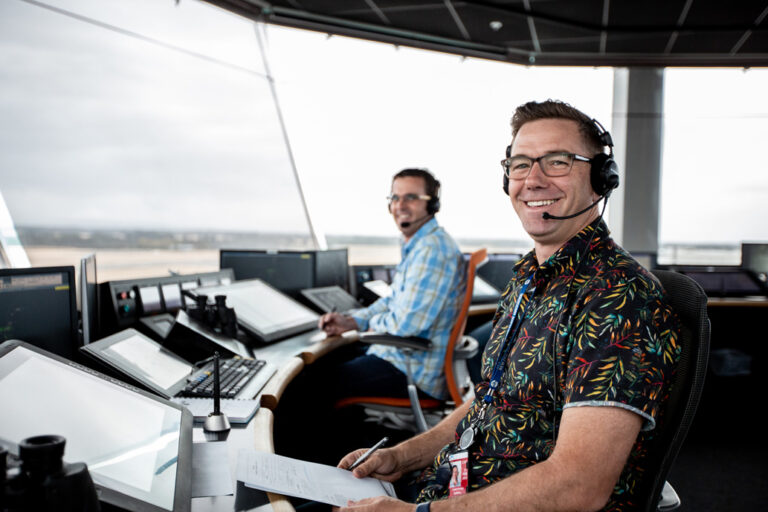Are you interested in training for one of the most critical roles in aviation, helping to guide aircraft safely through the airspace?
Airways International, the accredited training provider for Airways New Zealand, opens its air traffic services training programme for applications around twice a year.
We train air traffic control and flight service students in our training facilities in Christchurch, New Zealand.
Find out more below about the training, the selection process, and the role of an air traffic controller and flight service officer with Airways New Zealand.
We are now accepting applications for training programmes commencing in 2026/27. Please note that course start dates are yet to be confirmed.
All online assessments you receive must be completed by the date given in your application emails.
If you have applied and haven’t received an email from Airways Training Admin, please check your junk mail.
PLEASE NOTE: This training is for New Zealand citizens and permanent residents, and Australian citizens only. Students will complete New Zealand Qualifications Authority (NZQA) approved qualifications.
You’re invited to join our virtual info session to learn more about our ATC training programme. This is a free virtual event, brought to you via Microsoft Teams, where you will learn all about the training and the application and selection process, and what you can expect in the role of an air traffic controller.
Please join us on Tuesday 23 July 2024 at 6pm (New Zealand time).
Once you’ve successfully completed academy training with Airways International, you will be eligible to apply for a trainee air traffic control/flight service position with Airways New Zealand.
Most successful trainees offered a position with Airways start their careers undertaking on-job training at one of their 17 air traffic control tower units around the country.
A small number of air traffic control trainees may be employed directly into the Christchurch or Auckland surveillance centre.
Air traffic controllers with experience also have the opportunity to pursue a range of related specialist and management roles with Airways.
Learn about Airways New Zealand’s air traffic management operations, and the role of an air traffic controller at the Airways website.

Keeping our skies safe is a big responsibility. It takes a certain kind of person with the right skills, aptitude and attitude. In return it can offer a career full of challenges, opportunities, rewards and a sense of purpose and achievement.
In New Zealand, air traffic controllers and flight service officers manage the arrival and departure of more than 500,000 flights annually and are responsible for the safe and efficient movement of aircraft. They must be adaptable to ensure they can respond in unexpected or emergency situations.
Air traffic controllers provide pilots with flight information to ensure that every flight takes off, operates and lands safely. They work in surveillance control centres and in control towers and use various equipment such as radar and radios to communicate advice and instructions to pilots.
Flight service officers work in one of Airways New Zealand’s two flight service aerodromes in Paraparaumu and Milford Sound, or in one of their two surveillance centres in Auckland and Christchurch. They give advice and information for the safe and efficient movement of flights.
Learn more about the role of an air traffic controller at the Airways New Zealand website.

Different controllers handle the various stages of flight – as shown in this graphic. They are responsible for air traffic management, navigation services, and communications.

Air traffic services specialists have different areas of responsibility, depending on the stage of flight they manage. In New Zealand, air traffic controllers work from Airways New Zealand’s surveillance centre in Christchurch, the Oceanic Control Centre in Auckland, or in one of 17 control towers throughout the country.

These controllers enable the safe and efficient operation of aircraft near the aerodrome. They are based at an aerodrome’s control tower and control traffic visually within the control zone.

These controllers work in enroute upper airspace sectors and are responsible for keeping aircraft separate in the airspace around them.

These controllers manage and sequence traffic approaching and departing an aerodrome. They handle arriving and departing aircraft by working closely with both Area Surveillance and Tower controllers.
Flight service officers provide key advice and information, such as weather updates and operational information to aircraft operating outside controlled airspace.